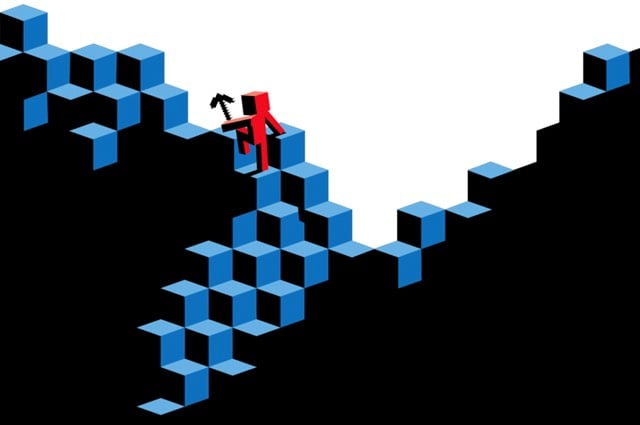Minecraft: more than just a game

Clive Thompson’s article for the NY Times about Minecraft captures what many players, parents, and teachers find exciting about the game that seems like more than just a game.
Presto: Jordan had used the cow’s weird behavior to create, in effect, a random-number generator inside Minecraft. It was an ingenious bit of problem-solving, something most computer engineers I know would regard as a great hack — a way of coaxing a computer system to do something new and clever.
In addition to learning about logic and computer science, various educators have also touted Minecraft’s lessons in civics, design, planning, and even philosophy. If you’ve ever seen little kids playing with blocks, you’ve noticed that some of those potential lessons there too.
Block-play was, in the European tradition, regarded as a particularly “wholesome” activity; it’s not hard to draw a line from that to many parents’ belief that Minecraft is the “good” computer game in a world full of anxiety about too much “screen time.”
Among the parents I know, Minecraft is not classified as a game…it’s very much tied to education.1 And when listening to the kids and their friends talk about it, if you can get past the endless chatter about zombies and diamond armor, their understanding of the whole world of possibilities is quite sophisticated.
And I can’t resist commenting on this little aside about Lego:
Today many cultural observers argue that Lego has moved away from that open-ended engagement, because it’s so often sold in branded kits: the Hogwarts castle from “Harry Potter,” the TIE fighter from “Star Wars.”
Until very recently, I was in that camp of cultural observers, frustrated by the brands and paint-by-number aspect of contemporary Lego kits. But my kids play with Lego a ton and I’ve observed plenty of open-ended engagement going on. Sure, they sit for 20-30 minutes putting the kits together using directions, but after they’re “done”, the real play begins. Ollie’s Star Wars ships dock at Minna’s birthday party. Soon, beach goers are wearing Stormtrooper helmets and Vader’s eating cupcakes. None of the “finished” products survive more than a few minutes without being augmented or taken apart to make something different. Ships take on wheels from previous kits and become delivery trucks (with cool laser cannons). Parts from every station, house, vehicle, and landscape get remixed into whatever’s necessary for their dramatic play. It’s like jazz with injection molded plastic.
On my iPad, I have a screen full of educational apps that the kids can work with pretty much anytime they want without asking. (To play Alto’s Adventure or Subway Surfer, they have to ask.) Minecraft is not on this screen — and I had to explain my decision on this specifically to the kids — but this article may have persuaded me to add it.↩





Stay Connected